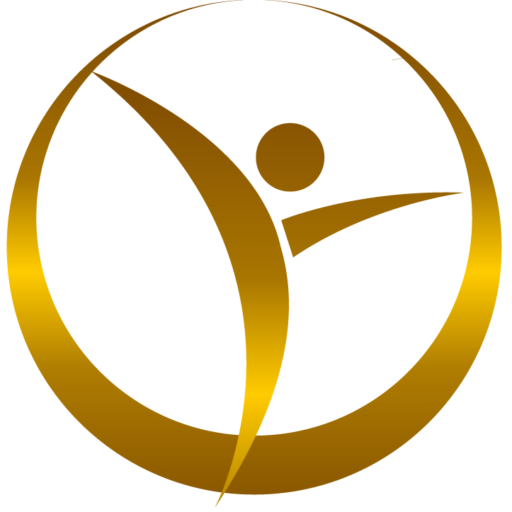Let me start with this quote today, “A woman’s health is her capital” – Harriet Beecher Stowe
A woman uses her full potential to fulfil her responsibilities and as these responsibilities grow, her health is being put on the back burner.
A healthy mind and body facilitate productive thinking and decision-making and produce healthy offspring for future generations.
Women suffer from a lot of deficiencies following menarche and childbirth.
Iron deficiency anemia has been the main cause of health burden in India for the past decade. (Natekar et al., 2022)
Many deficiencies go unnoticed and untreated in young girls and women of all ages.
This women’s day, let us bring awareness around women’s health and the ten essential nutrients that can change her life.
What causes deficiencies?
The root causes for deficiencies can be many. Both macro and micronutrients are essential to maintain healthy cellular functions.
The interactions between vitamins, minerals, and enzymes become the bedrock of metabolizing carbohydrates, proteins, and fats.
Deficiencies can be caused by:
- Malnourishment (insufficient dietary intake)
- Malabsorption
- Underweight or obesity
- Enzyme deficiency and insufficiency
- Allergies and intolerances
- Sickness and hospitalization
- Blood loss
- Genetic conditions
- Iron deficiency anaemia.
Iron
Iron deficiency in females is a very common health issue worldwide. Iron deficiency is caused due to low haemoglobin levels, low RBC, low MCV (mean corpuscular volume) and low MCH (mean corpuscular haemoglobin).
Colorectal cancer, hiatal hernia, and gastrointestinal bleeding can be a few other causes of iron deficiency.

Nutritional anemia, inherited anemia, and anemia caused by abnormal RBC are some of the types of anemia. Iron deficiency anemia (IDA) is persistent in most women of reproductive age, with a prevalence of 9% in developed countries and 43% in developing countries. (Qadir et al., 2022)
General symptoms of iron deficiency are: [ref]
- Fatigue and weakness
- Shortness of breath
- Dizziness
- Irregular menstruation or lack of periods
- Headaches
- Irregular heartbeat and
- Chest pain
Normal serum iron levels should range between 12-15 g/dL. The RDA (recommended daily allowance) for iron supplementation in young girls is 15mg, in adult women it is 18mg and in women above 50, it is 8mg.
Zinc
Zinc is an essential mineral for the immune system.
This mineral supports wound healing and recovery, especially post childbirth and post-menopausal stages. A diet rich in zinc in young girls supports their DNA synthesis, growth, and development.
Zinc deficiency can be caused by a lack of proper diet or even during a recovery phase or illness. Hair loss, infertility, frequent illnesses, sleep issues, and brain fog are some symptoms of zinc deficiency.
Leafy greens, cashews, poultry, seafood, nuts, and dairy are rich in zinc.
The RDA levels for zinc in women are 8mg a day. (Ronaghy & Halsted, 1975)
Calcium
It is a well-known fact that calcium is great for bones. Women lose their calcium during pregnancy and postpartum.
Calcium-rich foods and external calcium supplementation are essential during pregnancy and lactation to maintain calcium homeostasis in the body.
Loss of calcium will not only weaken the bones but also initiate osteoclastic activity in the body leading to osteoporosis and risks of fractures.

Calcium deficiency will elevate the parathyroid hormone (PTH) to maintain calcium levels in the body by interacting with other kidney and gut reabsorption. Any disruption in calcium and phosphorous interaction impacts cardiac health. (Moe, 2008)
Women with hyperparathyroidism have elevated serum calcium levels and hence medical interventions to reduce calcium levels are recommended.
RDA for calcium in young girls is 1300 mg, in women of reproductive ages, it is 1000 mg, and in elder women, it is 1200mg in a day.
Vitamin D
Vitamin D, also called the sunshine vitamin, is a vital nutrient that establishes bone health by interacting with calcium.
Vitamin D is absorbed by sunlight through the epidermis and is synthesized into Vitamin D3. Sun-induced vitamin D synthesis is greatly influenced by season, time of day, latitude, altitude, air pollution, skin pigmentation, sunscreen use, passing through glass, and aging.
Vitamin D is metabolized in the kidneys and the liver into 25-hydroxyvitamin D which is the major circulating form and 1, 25dihydroxyvitamin D which is the biologically active form. (Wacker & Holick, 2013)
A combination of ergocaliferol (D2) and cholecalciferol (D3) is recommended for better absorption. Vitamin D2 can be derived from plant sources whereas, Vitamin D3 can be obtained from ultraviolet B light exposure.
The RDA level for Vitamin D in females is 15 mcg a day.
Vitamin D deficiency in India has become more common due to lifestyle, increased indoor activities, lack of physical routines for children at school and inadequate exposure to sunlight.
Pollution can hamper the quality of sunrays, cultural practices such as burqa, excessive usage of sunscreens, phytates and phosphates in the diet can also deplete Vitamin d levels. (Aparna et al., 2018)
Magnesium
Magnesium is a mineral vital for overall health and contributes to a healthy circadian rhythm. It supports heart health, muscles, bones, and nerve function, maintains sugar levels, and aids in the correction of parathyroid glands.
Magnesium in combination with calcium supports bone, muscle, and heart health.
Magnesium in combination with melatonin reduces insomnia and improves sleep quality. This in turn leads to a perfect circadian rhythm supporting metabolic activities and decreasing the chances of non-communicable diseases.
Magnesium combined with potassium supports healthy heart functioning and blood pressure.
Magnesium deficiency can cause chronic inflammatory stress. (Tonick et al., 2016)
RDA levels for magnesium in women are 320 mg/day.
Vitamin E
Vitamin E eliminates free radicals, supports the immune system, reduces oxidative stress, maintains healthy skin and healing burns, and neurological functions, reduces inflammation, and decreases the chances of cancer appearance.
Vitamin E is an antioxidant and a fat-soluble vitamin and hence the absorption is supported by a diet rich in healthy fats.
Taking Vitamin E supplements orally does not completely reduce Alzheimer disease from developing. But in people who already have Alzheimer’s disease, taking Vitamin E along with some anti-Alzheimer’s medications might slow down memory loss. (Freedman et al., 2013)
RDA for Vitamin E in women is 15 mg-19 mg a day.
Iodine
Iodine deficiency can lead to goiter. It is an essential mineral that is crucial to thyroid function and overall health.
Iodine is predominantly found in seafood. India has suffered from iodine deficiency a couple of decades ago and hence iodized salt was introduced to eradicate the problem of iodine deficiency. (Kaur et al., 2017)
As the current trend of replacing iodized salt with organic salts is prevalent, I would like to bring awareness to the importance of iodized salt in our everyday life.
Consumption of iodine-fortified salt is very essential for all ages to support cognitive health, and memory, and reduce the risk of goiter.
RDA for iodine is 150mcg/day.
Vitamin C
Vitamin C supports immune function, prevents from frequent illness and cold, fights free radicals, supports bone health, tendons, blood vessels, and cartilage, and supports skin health by boosting collagen.
Vitamin C combined with vitamin E improves oxidation resistance. Also repairs DNA oxidative damage. Both Vitamin C and E acts as antioxidants.
It is also observed that these antioxidant supplementations prevented atherosclerosis. (Porkkala-Sarataho et al., 2000)
A diet rich in Vitamin C are citrus fruits, tomatoes, berries, peppers, and guava.
Vitamin C also enhances the absorption of iron.
RDA for vitamin C ranges between 40 mcg – 75 mcg /day.
Vitamin B 12
Vitamin B12 deficiency and malabsorption can lead to pernicious anaemia. B12 is absorbed from the intestines with the help of intrinsic factor.
Women who suffer from gastroenteric issues have difficulty absorbing vitamin B12. B12 is required to produce RBC and deficiency of B12 leads to the enlargement of the RBC and reduction in iron levels.
Vitamin B12 is found majorly in meat and less quantities in dairy products and leafy greens,
Vegetarian women who are diagnosed with deficient B12 must consider external B12 supplementation to prevent anaemia. Young females are at high risk of vitamin deficiencies. (Basalamah et al., 2023)
RDA for B12 in females is 2.4 mcg/day.
Folic acid
Folic acid or Vitamin B9 is a vital nutrient for DNA synthesis and production of RBC. Folic acid supplementation is very much essential during preconception stages, pregnancy and postpartum.

A deficiency in folic acid can also lead to anaemia. Folate before and during pregnancy reduces the chances of neural tube defects in the foetus. (Folate-Deficiency Anemia | Johns Hopkins Medicine, n.d.)
RDA for folic acid in young girls is 200-300 mcg, and for women in their reproductive ages, it is 400 mcg/day.
Keynotes
Iron, zinc, calcium, magnesium, vitamin D, vitamin C, vitamin E, iodine, vitamin B12, and folic acid are 10 essential vitamins for women that can improve overall health with consistency, nutrient dense diet and external supplementation if needed.
This does not mean other vitamins and minerals are less essential for women.
Women are commonly found to be deficient in the above 10 nutrients, and hence, it is recommended that they be addressed as early as possible.
References
Aparna, P., Muthathal, S., Nongkynrih, B., & Gupta, S. K. (2018). Vitamin D deficiency in India. Journal of Family Medicine and Primary Care, 7(2), 324. https://doi.org/10.4103/JFMPC.JFMPC_78_18
Basalamah, M. A., Ibrahim, M. O., Qutob, M. S., Jazar, A. S., Bakr, E. S. H., Alazzeh, A. Y., Al-Slaihat, A. H., & Azzeh, F. S. (2023). Vitamin B12status among asymptomatic young adult females and its association with some anthropometric and biochemical parameters: A cross-sectional study from Makkah (cobalamin deficiency in young adult females). Medicine (United States), 102(44), E35838. https://doi.org/10.1097/MD.0000000000035838
Folate-Deficiency Anemia | Johns Hopkins Medicine. (n.d.). Retrieved March 8, 2024, from https://www.hopkinsmedicine.org/health/conditions-and-diseases/folate-deficiency-anemia
Freedman, D. M., Kuncl, R. W., Weinstein, S. J., Malila, N., Virtamo, J., & Albanes, D. (2013). Vitamin E serum levels and controlled supplementation and risk of amyotrophic lateral sclerosis. Amyotrophic Lateral Sclerosis and Frontotemporal Degeneration, 14(4), 246–251. https://doi.org/10.3109/21678421.2012.745570
Kaur, G., Anand, T., Bhatnagar, N., Kumar, A., Jha, D., & Grover, S. (2017). Past, present, and future of iodine deficiency disorders in India: Need to look outside the blinkers. Journal of Family Medicine and Primary Care, 6(2), 182. https://doi.org/10.4103/JFMPC.JFMPC_372_16
Moe, S. M. (2008). Disorders Involving Calcium, Phosphorus, and Magnesium. Primary Care, 35(2), 215. https://doi.org/10.1016/J.POP.2008.01.007
Natekar, P., Deshmukh, C., Limaye, D., Ramanathan, V., & Pawar, A. (2022). A micro review of a nutritional public health challenge: Iron deficiency anemia in India. Clinical Epidemiology and Global Health, 14, 100992. https://doi.org/10.1016/J.CEGH.2022.100992
Porkkala-Sarataho, E., Salonen, J. T., Nyyssönen, K., Kaikkonen, J., Salonen, R., Ristonmaa, U., Diczfalusy, U., Brigelius-Flohe, R., Loft, S., & Poulsen, H. E. (2000). Long-Term Effects of Vitamin E, Vitamin C, and Combined Supplementation on Urinary 7-Hydro-8-Oxo-2′-Deoxyguanosine, Serum Cholesterol Oxidation Products, and Oxidation Resistance of Lipids in Nondepleted Men. Arteriosclerosis, Thrombosis, and Vascular Biology, 20(9), 2087–2093. https://doi.org/10.1161/01.ATV.20.9.2087
Qadir, M. A., Rashid, N., Mengal, M. A., Hasni, M. S., Kakar, S. U. D., Khan, G. M., Shawani, N. A., Ali, I., Sheikh, I. S., & Khan, N. (2022). Iron-Deficiency Anemia in Women of Reproductive Age in Urban Areas of Quetta District, Pakistan. BioMed Research International, 2022. https://doi.org/10.1155/2022/6677249
Ronaghy, H. A., & Halsted, J. A. (1975). Zinc deficiency occurring in females. Report of two cases. The American Journal of Clinical Nutrition, 28(8), 831–836. https://doi.org/10.1093/AJCN/28.8.831
Tonick, S., Muneyyirci-Delale, O., Tonick, S., & Muneyyirci-Delale, O. (2016). Magnesium in Women’s Health and Gynecology. Open Journal of Obstetrics and Gynecology, 6(5), 325–333. https://doi.org/10.4236/OJOG.2016.65041Wacker, M., & Holick, M. F. (2013). Sunlight and Vitamin D: A global perspective for health. Dermato-Endocrinology, 5(1), 51. https://doi.org/10.4161/DERM.24494






